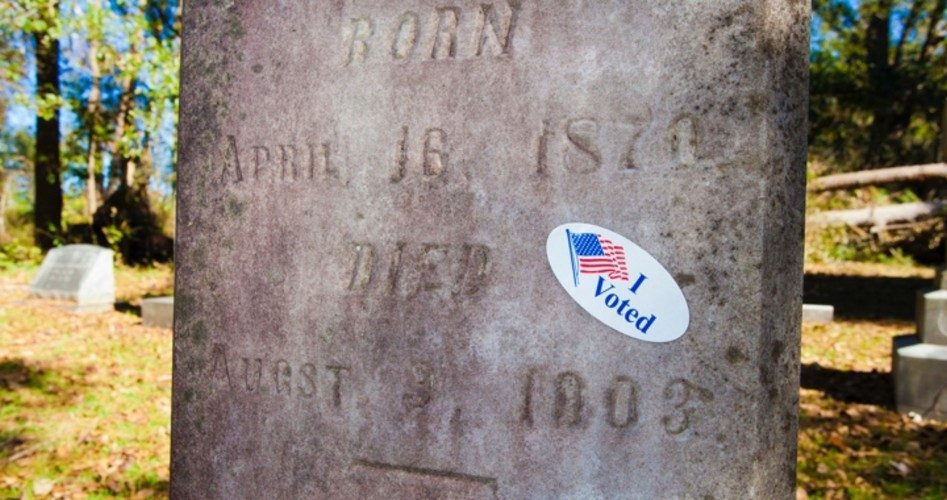
A short time after the mid-term elections in which the Democrats regained control of the U.S. House of Representatives, picking up 40 seats, then-House Speaker Paul Ryan (R-Wis.) expressed some doubt as to the integrity of the election results in California.
“California just defies logic to me.… We were only down 26 seats the night of the election, and three weeks later, we lost basically every contested California race. This election system they have, I can’t begin to understand what ‘ballot harvesting’ is.”
Ryan is not alone in wondering if American elections are being manipulated in order to favor Democratic Party candidates, but Judicial Watch, a self-described “watchdog” group, has opted to not just wonder about what is going on. Judicial Watch filed a federal lawsuit last year — Judicial Watch, Inc., et al. v. Dean C. Logan, et al. — in an effort to force the state of California, particularly Los Angeles County, to clean up its voter rolls, which Judicial Watch argued was required under the National Voter Registration Act. Neither the state nor the county has bothered to remove inactive voters from the rolls for 20 years.
Late last week, Judicial Watch announced that it had signed a settlement agreement with the state and the county, which agreed to begin a process of removing from their voter-registration rolls as many as 1.5 million names that may be invalid. The lawsuit alleged that Los Angeles County has more voter registrations on its voter rolls than it has citizens who are old enough to register. Data published by the U.S. Election Assistance Commission, Los Angeles County, has a registration rate of 112 percent of its adult citizen population. In fact, the state of California has a registration rate of about 101 percent of its age-eligible citizenry, with 11 of the state’s 58 counties having registration rates exceeding 100 percent of the age-eligible citizenry.
It is estimated that more than one in every five registrations in Los Angeles County likely belongs to a voter who has either moved or died. Judicial Watch said, “Los Angeles County has the highest number of inactive registrations of any single county in the country.”
“This settlement vindicates Judicial Watch’s groundbreaking lawsuits to clean up state voter rolls to help ensure cleaner elections,” said Judicial Watch President Tom Fitton. “Judicial Watch and its clients are thrilled with this historic settlement that will clean up election rolls in Los Angeles County and California — and set a nationwide precedent to ensure that states take reasonable steps to ensure that dead and other ineligible voters are removed from the rolls.”
While many other factors are no doubt involved, this helps partly explain the stranglehold that the Democratic Party has on the state of California, and its most recent sweep of every single congressional race in the once solidly Republican Orange County. It also helps understand how “ballot harvesting” — that former Speaker Ryan mentioned — contributed to how the Democratic Party was able to win so many races in the days after the official election day, as additional ballots were counted.
What is ballot harvesting? Instead of absentee ballots being returned by mail, organized volunteers collect absentee ballots from targeted voters and turn them in. While no doubt some of these ballots are legitimate, with so many bogus registrations, it is understandable how Democratic Party activists would have a large number of non-existent voters to use to pad the vote.
It is clear that Democrats in California have ample opportunity to commit election fraud. While not new — Lyndon Johnson used tombstone voting (registered, but dead voters) to steal the U.S. Senate race in Texas in 1948 — its incidence seems to be getting worse, rather than better. Democrats resist all efforts to reduce such election fraud, even opposing common-sense checks on potential fraud, such as voter I.D. laws.
This problem may be particularly noxious in California, but it is by no means confined to the Golden State. Judicial Watch has been successful in similar suits in Ohio, Kentucky, Indiana, and Maryland. In other words, it may be only the tip of the proverbial iceberg.
Such examples of potentially serious election manipulation should provide a powerful illustration of just how important the Electoral College is to presidential elections. While it is unlikely that a Republican could seriously contest a presidential contest in California, or a Democrat in Oklahoma, for the near future, consider if we were to elect a president by a national popular vote, rather than the state-by- state popular vote used now with the Electoral College.
The problems uncovered by Judicial Watch in California, with such practices as “ballot harvesting,” would undoubtedly be even more rampant with a national popular vote. Can one imagine a national election with less than a million votes separating the candidates — or even a few thousand votes? “Ballot harvesting” and other such practices would no doubt produce hundreds of thousands of mysterious votes from “voters” who do not exist, or maybe from real people who have long been deceased.
It is also yet another example of why a national convention to consider amendments to our Constitution could be particularly perilous, as the Electoral College would surely be targeted for elimination. After all, the electorate that put Nancy Pelosi back in control of the House of Representatives would be the voters choosing delegates to any such national constitutional convention, where the Electoral College, the Second Amendment, and maybe even the Constitution itself would be in jeopardy.
Image: gsagi via iStock / Getty Images Plus



